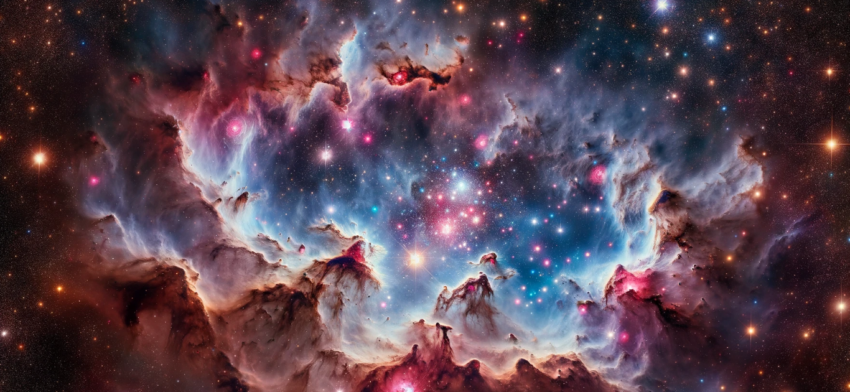| Listen to our audio presentation: The James Webb Space Telescope |
Efforts to unveil the structure of the local interstellar medium and its recent star-formation history have spanned the past 70 years. Recent studies using precise data from space astrometry missions have revealed nearby, newly formed star clusters with connected origins. Nonetheless, mapping young clusters across the entire sky back to their natal regions has been hindered by a lack of clusters with precise radial-velocity data.
Key Findings
- High-Quality Young Clusters: 155 out of 272 (57%) high-quality young clusters within 1 kiloparsec of the Sun arise from three distinct spatial volumes.
- Data Analysis: This conclusion is based on the analysis of data from the third Gaia release and other large-scale spectroscopic surveys.
- Origins: These clusters, now dispersed throughout the solar neighborhood, reveal past positions more than 30 million years ago indicating that they formed in one of three compact, massive star-forming complexes.
- Clustered Supernovae: An estimated 200+ supernovae from these clusters likely produced both the Local Bubble and the largest nearby supershell GSH 238+00+09.
- Visibility in Modern Maps: These structures are clearly visible in modern three-dimensional dust maps.
Detailed Descriptions of Star-Forming Complexes
Taurus Star-Forming Complex
- Location: Situated in the Taurus constellation.
- Distance from Earth: Approximately 140 parsecs.
- Characteristics:
-
- Contains many small, low-mass stars.
- Rich in molecular clouds and dense cores.
- Noted for ongoing star formation activity.
- Significance: One of the closest star-forming regions to Earth, providing a critical area of study for understanding low-mass star formation.
Scorpius–Centaurus Star-Forming Complex
- Location: Spans across the constellations Scorpius, Centaurus, and Lupus.
- Distance from Earth: Approximately 125-145 parsecs.
- Subgroups:
-
- Upper Scorpius: Youngest subgroup with star ages around 5 million years.
- Upper Centaurus–Lupus: Intermediate ages of about 16 million years.
- Lower Centaurus–Crux: Oldest subgroup with ages up to 17 million years.
- Characteristics:
-
- Comprises many massive, high-mass stars.
- Hosts several OB associations.
- Shows significant evidence of past supernova activity.
- Significance: The largest and closest OB association to Earth, making it a crucial site for studying massive star formation and evolution.
Implications of the Study
- Understanding Star Formation: The study provides a clearer picture of the spatial distribution and origins of young star clusters, enhancing our understanding of star formation processes.
- Impact on Local Interstellar Medium: Insights into the clustered supernovae and their effects on the local interstellar medium, particularly the formation of the Local Bubble and supershells, deepen our knowledge of the galactic environment surrounding our solar system.
This comprehensive analysis underscores the importance of these three massive star-forming complexes in shaping the structure and evolution of the nearby interstellar medium and emphasizes the interconnected nature of stellar and galactic phenomena.
What is a parsec:
A parsec is a unit of distance used in astronomy to measure the vast distances between celestial objects. One parsec is equivalent to approximately 3.26 light-years. This means that light, which travels at about 299,792 kilometers per second (186,282 miles per second), would take 3.26 years to travel the distance of one parsec.
In more precise terms:
- 1 parsec (pc) = 3.26 light-years
- 1 parsec = 206,265 astronomical units (AU), where 1 AU is the average distance between the Earth and the Sun.
- 1 parsec ≈ 3.086 × 10^13 kilometers (1.917 × 10^13 miles)
The term “parsec” is derived from “parallax of one arcsecond.” It is defined as the distance at which one astronomical unit subtends an angle of one arcsecond. This unit is particularly useful in astronomy for measuring distances to stars and galaxies.

